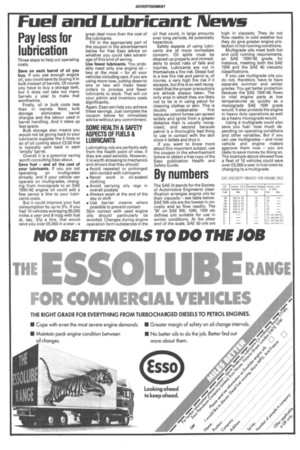By numbers
Page 43

If you've noticed an error in this article please click here to report it so we can fix it.
The SAE (it stands for the Society of Automotive Engineers( classification arranges engine oils by their viscosity — see table below. SAE 5W oils are the lowest in viscosity and so flow readily. The 'W' on SAE 5W, 10W, 15W etc defines oils suitable for use in winter conditions. At the other end of the scale, SAE 50 oils are high in viscosity. They do not flow readily in cold weather but they do give greater engine protection in hot running conditions. Multigrade oils meet both hot and cold running requirements, an SAE 15W/40 grade, for instance, meeting both the SAE 15W and the SAE 40 viscosity classifications.
If you use multigrade oils you do not, therefore, have to have separate summer and winter grades. You get better protection because the SAE 15W/40 flows to vital engine parts at low temperatures as quickly as a monograde SAE 15W grade would. It also protects the engine in heavy duty operations as well as a heavy monograde would.
Using a multigrade could also save you fuel: how much depending on operating conditions and other variables, But if you can use multigrades — and most vehicle and engine makers approve them now — you are likely to save money by doing so. The example above showed how a fleet of 10 vehicles could save over £5,000 a year in fuel costs by changing to a multigrade.




























































































